Last week I planned a big Artist’s Date in NYC. I visited my sister’s apartment to see her Christmas tree before she took it down and since I was there I wanted to go to the El Greco Icon Paintings exhibit at the Onassis Foundation/Cultural Center.
I know I’m supposed to go on these artist dates all alone, but I’ll plan another one like that. This was different because we were together anyway so it made sense to go together. The Onassis Center is on Fifth Avenue and 51st Street, right smack in the tourist areas. Nearby is Rockefeller Center, Saks Fifth Avenue, Bergdorf-Goodman, and many of the designer stores like Gucci, and the lot. Of course a pair of on-sale Manolo Blahnik shoes from Bergdorf’s found their way into a shopping bag and followed me out the door, but we won’t go there for now.
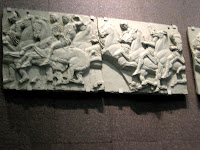


The El Greco exhibit wasn’t all El Greco, but a view of the context of artists and style of icon painting that he emerged from. The Greek island of Crete, where the artist was born, in the 1200’s was a Venetian territory and the artists developed icons in the Byzantine style as well as adopting a Late Gothic style since Crete was a multicultural society at that time. Artists such as Bellini, Raphael, and Titan were influences on these icon painters. At this time, Crete was overflowing in the number of churches and there was a great need for this work. The artists moved between Constantinople, Crete and Venice as apprentices, Domenikos Theotokopoulos among them at about 1563, when he became a master icon painter.
As a Greek Orthodox christian, to me these were not only paintings, but icons of the saints of our church. The exhibition space was large and dimly lit and I wanted to venerate each icon as we viewed them. Of course, the paintings stand alone as art pieces. We were able to look at the work up close enough to see the brush strokes. These are very old paintings, many of them having been repaired over the years from many causes. The artists painted on treated wood and the icons were hanging in churches, monasteries, and I’m sure, not under the best conditions. At least now they are being preserved. Some works were wall size pieces, and many were smaller sized.
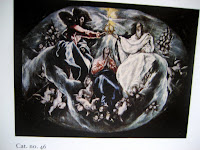

By the time El Greco (“The Greek”) developed his signature style of painting he was living in Venice, around 1568, where he became an apprentice once again studying Western European art in the Venetian style. He was living in Toledo, Spain by 1576, where he spend the rest of his life. The elongated figures and chiaraschuro, that represents his final style is totally different than that of his Cretan icons and is very well depicted in this exhibition.
While viewing this exhibit I was reminded of an icon I have at home. It was given to me by my uncle who was an antique furniture restorer. Where he got this icon I’ll never know, but it has these same Venetian influences! So now I’m on a quest to find out more about it. Tomorrow photos!


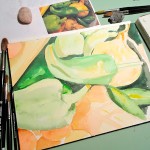
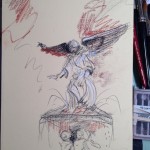

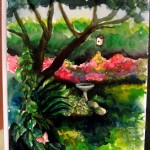

Thanks for posting these fabulous icons! I find El Greco wonderful and the stylized look of icons beautiful.
I’m glad you liked the post, Lrc! These were small icons, but his paintings at the Metropolitan Museum of Art are wonderfully huge! I agree his work is wonderful.